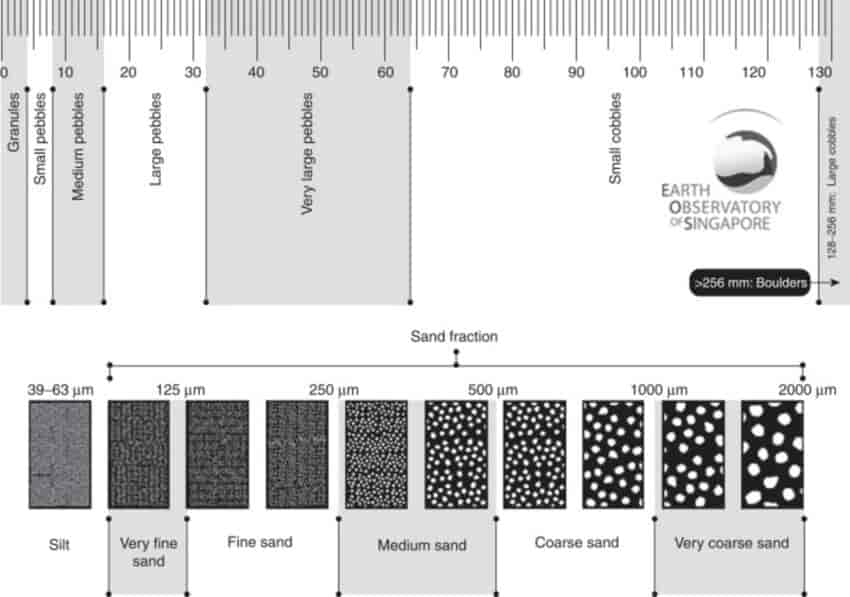D 0.5 Particle Size
I tried to understand the meaning of D43 and D05 values in grain size analysis but everywhere it is written that these values are volume weighted mean and surface weighted. A simple example is.

Grain Size What Is Grain Size How Is Grain Size Measured Geology Page
High accuracy high resolution particle size distributions.

. The evaluation function varies. Dv01 Dv09 Size µm D43 sensitive to large particles D32 Dv05 median Dv10 Never use the D100. Simulation results of separation performance Ep a and D 50 b as a function of distribution parameter σ j for different median particle size d 05 when the MC ratio is 56.
High accuracy high resolution particle size distributions. Adopt characteristic value of particle size distributiond01d05d09known standard particlesto evaluate the instrument. There is some change in the particle size distribution with varying disperser pressure.
Prepare the instrument for measuring in wet mode using IPA as. A particle size distribution indicates the percentage of particles of a certain size or in a certain size interval. Ad Measure particle size and concentration with Nicomp DLS and AccuSizer SPOS systems.
D-values can be thought of as a mass division. Percentiles are defined as XaB where. These intervals are also called size classes or fractions.
Particle size reports use notation specific to the field that may not be intuitive. The two sizes D10 and D90 enclose the range of particle sizes of the sample powders. Particle size for a given percentage volume of the sample.
The particle size exceeds this range can be ignored because of the small amount of. N for number v for volume. Ad Measure particle size and concentration with Nicomp DLS and AccuSizer SPOS systems.
Particle size distribution PSD is the means of measuring the number of particles by mass and size to calculate a size and mass range. This is the mean number or more accurately the number length mean because the. Calculate particle size distribution with the METTLER TOLEDO EasyViewer.
Look at the particle size in a microscope and choose a lens capable of measuring the largest particles see Remarks 71. The relative standard deviation. Sensitive to small particles 10 of the particles lie below this diameter 90 of.
The distribution of talc particles is displayed in volume as well as number of particles. Clearly if we look at our particle under the microscope we are looking at some 2-D projection of it and there are a number of diameters that we can measure to characterise our particle. Computes the cumulative distribution density function of a continuous particle size distribution at a specified particle diameter an optionally in a specified basis.
The particle size has a fluctuation effect on the pore structure of coalchar. Particle size distribution of STP and SIA by DLS are represented in Figure 2. If you sum all the diameters Sd123 then divide by the number of particles n3 the answer is 2.
The following are common terminologies associated with particle size data presentation. Ad Real-time particle size shape analysis for laboratory and process environments. X parameter usually D for diameter a distribution weighting eg.
The variability in each set of measurements is a result of the variability within the sample itself.

Method Of Particle Size Evaluation Of Ground Material The Global Standard For Mixing Defoaming Dispersing And Pulverizing Thinky Corporation

Method Of Particle Size Evaluation Of Ground Material The Global Standard For Mixing Defoaming Dispersing And Pulverizing Thinky Corporation

Method Of Particle Size Evaluation Of Ground Material The Global Standard For Mixing Defoaming Dispersing And Pulverizing Thinky Corporation

Method Of Particle Size Evaluation Of Ground Material The Global Standard For Mixing Defoaming Dispersing And Pulverizing Thinky Corporation

Method Of Particle Size Evaluation Of Ground Material The Global Standard For Mixing Defoaming Dispersing And Pulverizing Thinky Corporation

Matrix Original Artwork In 2022 New Media Original Art Abstract
0 Response to "D 0.5 Particle Size"
Post a Comment